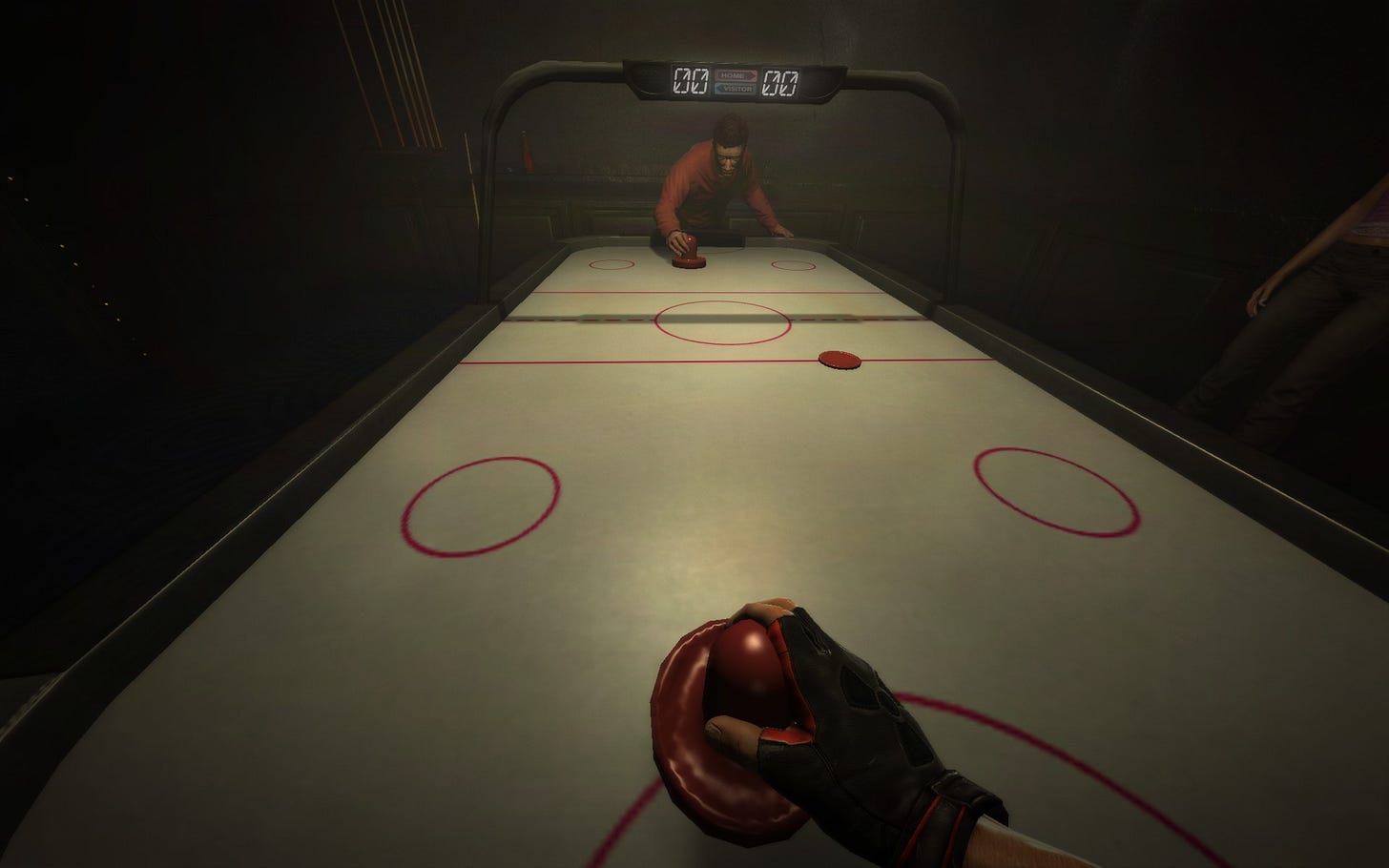Duke Nukem 3D released on January 29, 1996. I was seven years old. Unfortunately, thanks to some good parenting from Jackie and Frank, I was not allowed to play Duke Nukem 3D. Which wasn’t really a big deal since I was generally unaware of Duke’s existence. Now—as the cohost of a semi-successful video game history podcast and self-described “gamer”—I felt that the overtly campy action sequences and casual misogyny were something I really missed out on as a child. Therefore, this past week, I felt it was time to dive into Duke Nukem and see what the hype was all about.
The simple and obvious way to dive in would be to play Duke Nukem 3D. Unfortunately, my clickbait influenced, do it for the lulz attitude steered me in a different direction. I set my compass to a heading of hopelessness and despair, plotted a course for the death of a ‘90s cultural icon, and journeyed into Duke Nukem Forever.
Duke Nukem Forever—for those uninitiated in video game historical tragedies—was announced shortly after the release of Duke Nukem 3D in 1997. The game would then go through a development spanning fourteen and a half years. Sometimes, there were droughts of three years with no news on Duke. The version of Duke Nukem Forever I played did not release until June 10, 2011 and was considered a disaster and assassination of one of the most iconic ‘90s video game franchises. The game was a jumbled mess due to the developers constantly changing the game engine and adding new features. The original “everything is interactive” nature of Duke Nukem 3D was so prevelant on their minds and had to be included in the new game. This feature worked well for immersion, the pinball machines you saw were playable, you could microwave popcorn, and you could grab turds out of the toilet to throw them at people—all everyday normal life activities. What was missed though was the crucial part of any first person shooter—fun first person shooting.
Why kill aliens when you can play air hockey?
Myself and cohost Tyler Ostby decided to give Duke Nukem Forever a go and it started out wonderfully. The game was delightfully campy and fun. We actually got to the point where we both said, “wow, maybe the game is good?”
Oh, what sweet summer children we were. Naive to the bleach blonde haired anaconda, slowly constricting, biding its time to consume us in a menagerie of poop and dick jokes.
It was the third loading screen of the remote control car sequence in the Duke Casino that I realized the major problem with Duke Nukem Forever—a lack of respect for the player’s time. The constant puzzling, turret sequences, and monotonous gun fights did not evolve into something new and challenging fast enough (if at all) to capture my attention. A good game will introduce a gameplay mechanic, teach you through action, and then build on that concept into something new. Duke Nukem Forever takes that tight rope act of balancing gameplay with new systems and decides you’d do better without the wire and just freefall through the same boring shooting sequences for nine hours. Even the new ideas, the aforementioned remote control car and shrinking down into miniature Duke Nukem, just feel like a tedious chore after the fourth or fifth time.
There is a monster truck sequence in the middle of the game where Duke runs out of gas. Duke Nukem—unstoppable killing machine, action hero, lover of punching things to death—has to exit his monster truck, stop killing aliens, and platform on top of a shack to get gas. What was the point of this? The only explanation I can think of is I had too much fun running over aliens in my monster truck so now I have to be reminded that monster trucks use gas and will run out eventually. All fun has a cost and one day I’ll remember that as I fuel up my Kia Soul at Costco—wishing I owned a monster truck.
Since I have feelings and the developers of Duke Nukem Forever have feelings—I would be remiss not to mention the game mechanic I love in Duke Nukem Forever—The Ego Meter. Where most games work with an average, red health meter that either autoregenerates or heals after turkey leg consumption, Duke Nukem’s health is entirely centered around his ego. This means you can grow Duke’s ego by participating in some of the activities that make Duke feel good. That includes high scores in arcade games like pinball, bench pressing a ton of weight, or killing alien bosses in hilarious and humiliating ways.
There’s an aspect to this game that takes an eerie glimpse into the future. The Casino made of gold, Duke Nukem branded products, and general inflation of his ego really give Duke Nukem some serious Donald Trump vibes. Which is why to no 2023 player’s surprise Duke announces his candidacy for President of the United States at the end of the game.
See what I mean?
Tyler and I made our episode and stated our case on why this game is bad. If you’re interested in that you can give it a listen. What I can’t shake is that Duke Nukem Forever is a prime example of the Internet hype train that still plagues us to this day. The constant calling for the game of games, the one game to rule them all, the “insert popular video game franchise here” killer continues to put games on pedestals and ruin them. Duke Nukem Forever was an impossible dream. Built up by a community of developers and fans that believed this game could be the best of the best. After almost fifteen years of hype, the ego meter just couldn’t tank that much damage.






